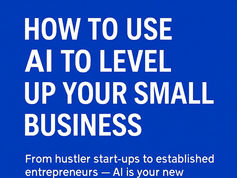“No Way Out: Inside Baltimore’s Open-Air Drug Markets and the Stories They Swallow Whole”
- K Wilder

- Jul 21
- 4 min read
On any given night in Baltimore, the corners tell the truth. Beneath the neon lights of Lexington Market, through the once-bustling blocks of Upton, and along the intersections of Penn and North Avenue, deals are made in the open. In these places — where food vendors, bus stops, and small shops stand side by side with shadow economies — the city’s drug crisis plays out in plain sight.

Baltimore’s open-air drug markets are nothing new. For decades, they’ve shaped life in neighborhoods starved of investment, stripped of opportunity, and policed in ways that often do more harm than good. But recent waves of mass overdoses — like the one this year that claimed multiple lives on North Avenue in a single night — have put a renewed spotlight on a deadly status quo.
In a haunting video that’s been circulating online, several men and women living with addiction share how they ended up here — on the blocks, in the alleys, in the grip of drugs so potent that one hit can be the last.
One man, wrapped in a threadbare blanket near Lexington Market, recalls his first taste of heroin. “I got hurt at work — pills got me started. Once they cut me off, this was all I could afford. And out here, you can find it quicker than you can find a meal.”
A young woman interviewed near Penn/North echoes the same heartbreak. She fled an abusive home at 17. The streets gave her an escape — and an instant supply of painkillers and heroin. “At first, I thought I could handle it. But they mix that fentanyl in, and you don’t even know. One bad bag and you’re gone.”
These stories mirror the headlines. In recent months, paramedics and police have scrambled to respond to clusters of overdoses — often more than a dozen people within hours — in and around the same open-air markets. Fentanyl, xylazine, and other cheap, deadly cutting agents make each dose a roll of the dice.
A Market in Plain Sight
What makes Baltimore’s crisis so devastating is how visible — and yet invisible — it remains. Walk through Lexington Market or the Upton Market area during the day, and you’ll see families shopping for fresh produce, tourists trying crab cakes, and workers grabbing lunch. But woven into these daily scenes are the quiet handoffs, the subtle nods, the dealers with stashes tucked in socks or under mailboxes.
In Penn/North — the neighborhood that once made national headlines during the 2015 uprising after Freddie Gray’s death — the open-air market never really went away. Vacant buildings provide cover. Loitering has become currency. And for too many, the corner is the only reliable source of income and escape.
Local residents know this reality all too well. Grandmothers watch their blocks erode as they sweep stoops every morning. Small business owners do their best to stay open, fighting not just economic decline but the stigma that pushes customers away.
“I didn’t think it would be me. I had a job. A family. Then I hurt my back and the pills ran out — but the pain didn’t.” — Anthony, 44, sitting outside Lexington Market.
“You can come here and get high before you can find a place to sleep. The dope boys look out for you more than anybody else.” — Tasha, 29, near Penn and North.
“They cut it with anything now. Fentanyl, tranq, whatever makes it stronger. You buy what you can afford — you hope it doesn’t kill you.” — Jay, 38, near Upton Market.
How Did It Get This Bad?
Generations of disinvestment, redlining, and broken promises left neighborhoods like Sandtown-Winchester, Upton, and Penn/North vulnerable. Factories closed. Jobs vanished. Schools crumbled. Treatment centers and recovery beds were never enough — and when the opioid crisis hit, it found a city already on its knees.
Law enforcement crackdowns may clear a corner for a day, maybe a week — but they do not erase the demand. In fact, many say they make things worse: pushing people deeper into the shadows, or into neighborhoods that aren’t prepared to handle the fallout.
As long as powerful opioids remain cheap and plentiful, Baltimore’s open-air markets will keep drawing people in — people whose stories begin long before the needle.
What’s Next?
Community advocates say real change won’t come through arrests alone. They call for more harm reduction — more outreach workers, more mobile treatment units, more access to Narcan, more safe spaces for detox and recovery. They demand that the city treat addiction like the public health emergency it is — not a moral failing.
And they want the stories to be heard. Every person in that video is more than an addict — they are a reminder that what happens on these corners is not just about drugs. It’s about poverty, trauma, mental health, housing, and the choices we make as a city about who is worth saving.
Until then, the corners will keep whispering the same story. At Lexington Market. In Upton. On Penn and North. They remind us: when there’s no way out, people will take whatever they can to numb the pain — even if it means risking it all for one more hit.
If you or someone you love is struggling with addiction in Baltimore, call 211 for local resources or connect with community harm reduction organizations. There is help — and hope — if we choose to listen.

















Comments